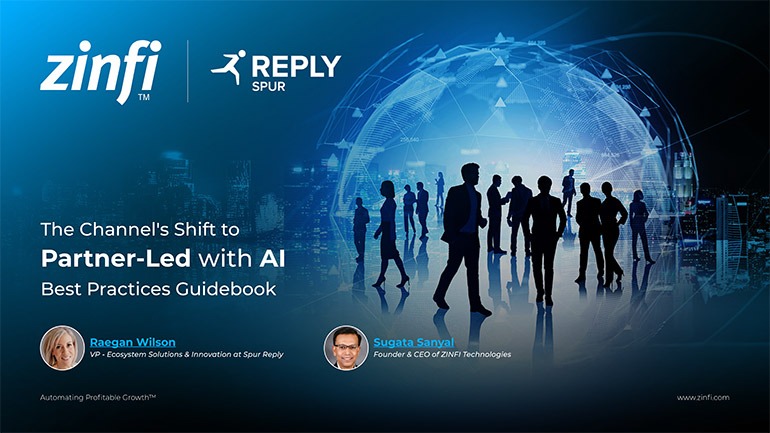Best Practices Articles

Enterprise PRM Software: Powering Scalable Channel Growth for Large Organizations
Enterprise PRM software empowers large organizations to manage complex global channel ecosystems. It automates partner lifecycle tasks, from onboarding to deal registration and incentives, driving accelerated revenue, enhanced efficiency, and improved partner engagement through a centralized, data-driven platform.
Key Takeaways:
- Enterprise PRM boosts channel growth for large firms.
- It automates partner lifecycle, streamlines operations.
- Centralizes data, manages global multi-language programs.
- Enhances partner engagement and loyalty.
- Provides deep channel visibility and analytics.
- Accelerates revenue generation and operational efficiency.
- Strategic implementation is crucial for success.
- PRM is a forward-looking investment for growth.
Enterprise PRM Software enables significant growth for large and complex organizations. These powerful entities constantly seek to expand their market reach, tap into new geographic territories, and establish a dominant presence in diverse industries. Developing and nurturing robust indirect channels becomes critical to achieving these ambitious goals. This vast and intricate network typically includes a wide array of partners: value-added resellers (VARs), experienced distributors, expert system integrators (SIs), dedicated managed service providers (MSPs), influential referral partners, innovative independent software vendors (ISVs), and various strategic alliances. Each partner type brings unique strengths, offering invaluable local market knowledge, specialized expertise, and a remarkably cost-effective pathway to achieving widespread market dominance.
However, the sheer scale and inherent complexity of managing such an expansive and multifaceted partner network present monumental challenges. These networks often span numerous geographies, operate across multiple languages and time zones, and must navigate a bewildering array of diverse regulatory landscapes and varied cultural norms. The overwhelming volume of partners, the massive amount of data generated, the constant flow of communications, and the sheer number of financial transactions can quickly overwhelm traditional, manual management methods. This often leads to significant inefficiencies, missed opportunities for revenue generation, and, critically, the potential for damaging channel conflicts that erode partner trust and hinder overall progress.
In this demanding environment, Enterprise PRM Software emerges as an indispensable and transformative solution. Unlike more basic PRM versions designed for smaller operations, accurate Enterprise PRM Software is specifically engineered to handle large, global organizations' immense scale, intricate demands, and rigorous requirements. It functions as a sophisticated central nervous system for your entire channel ecosystem. This advanced platform automates many complex processes, provides unparalleled visibility into every aspect of partner engagement, and fosters a collaborative, highly efficient, and high-performing partner network.
This comprehensive guide delves deeply into the capabilities and strategic importance of Enterprise PRM Software. We will meticulously examine the multifaceted challenges it expertly overcomes. We will highlight its critical features and the profound benefits it delivers. Furthermore, we will meticulously outline the strategic considerations for its successful implementation, ensuring your organization can fully leverage its potential for scalable channel growth.
What Exactly is Enterprise PRM Software?
The Evolution of Channel Management
At its core, Partner Relationship Management (PRM) software streamlines and optimizes the entire partner lifecycle. This comprehensive management spans everything from initial partner recruitment and efficient onboarding to continuous sales and marketing enablement. It also includes managing incentives, accurately tracking performance, and ensuring ongoing partner success. Enterprise PRM Software represents an incremental improvement and a profound evolution of this concept. It ascends to an entirely different level of capability, specifically engineered to meet the exacting operational realities and demanding requirements of large multinational corporations with vast and complex indirect sales channels.
While a basic PRM solution might adequately suffice for a small-scale channel program with a limited number of partners, accurate Enterprise PRM Software possesses a distinct set of advanced characteristics and capabilities that set it apart.
Unparalleled Scalability: This is perhaps the most defining characteristic. Enterprise PRM Software is architected from the ground up to manage thousands of individual partner organizations effortlessly. It can seamlessly process and analyze millions of transactions – including leads, deals, claims, and communications – without any degradation in performance. This robust, future-proof infrastructure ensures that the PRM solution can support current extensive channel operations and readily scale to accommodate significant future channel growth and expansion into new markets.
Inherent Global Readiness: Operating a global channel demands a solution built for the world. Enterprise PRM Software inherently supports multi-language interfaces, ensuring partners worldwide can interact in their native tongue. It handles multi-currency transactions, providing financial clarity across diverse economies, and seamlessly manages multi-region operations, adapting to local nuances. This global capability actively adapts to and supports diverse legal frameworks, complex tax regulations, and varied cultural norms, ensuring consistent operation and compliance across borders.
Mastery of Complexity Handling: Large enterprises rarely have simple channel programs. Enterprise PRM Software excels at managing intricate partner hierarchies, including master distributors, sub-distributors, and various levels of resellers. It supports sophisticated multi-tiered programs with clearly defined benefits, varying commission structures, and differentiated access levels. It skillfully executes complex deal registration processes involving multiple approval layers and intricate routing rules. It also handles multi-layered incentive structures that often combine performance-based bonuses, marketing development funds, and various rebates.
Profound Deep Integration Capabilities: For an enterprise, a standalone solution creates more problems than it solves. Therefore, Enterprise PRM Software must integrate seamlessly and deeply with existing enterprise systems. These critical integrations typically include leading CRM platforms such as Salesforce and Microsoft Dynamics 365, ensuring synchronized customer and pipeline data. It also connects with robust ERP systems like SAP and Oracle, providing financial and operational data alignment. Furthermore, integration with Marketing Automation Platforms (MAPs) like Marketo and HubSpot ensures a cohesive marketing strategy that extends through the channel. This robust integration capability ensures a unified, real-time view of all relevant business data across the organization.
Uncompromising Robust Security & Compliance: Large enterprises operate under intense scrutiny regarding data security and privacy. Enterprise PRM Software adheres to and often exceeds demanding data security and privacy standards. This includes adherence to global regulations such as GDPR (General Data Protection Regulation), CCPA (California Consumer Privacy Act), and industry-specific certifications like ISO 27001 and SOC 2. It implements advanced security measures to safeguard sensitive partner and customer data rigorously, ensuring confidentiality, integrity, and availability.
Expansive Comprehensive Feature Set: Beyond the foundational elements, accurate Enterprise PRM Software offers an extensive array of advanced functionalities. These features are designed to automate and optimize nearly every conceivable aspect of partner engagement, enablement, management, and performance optimization. This includes sophisticated content management, advanced analytics, robust reporting, and highly configurable workflows tailored to specific business needs.
In essence, Enterprise PRM Software transforms what might otherwise be a chaotic, unwieldy, and inefficient partner network into a highly organized, streamlined, efficient, and, ultimately, significant revenue-generating machine. It moves beyond basic partner contact management, firmly establishing itself as a sophisticated, strategic platform. This platform masterfully orchestrates complex channel operations at an unprecedented scale, driving predictable and sustainable growth.
The Unique and Multifaceted Challenges of Managing an Enterprise Channel Ecosystem
Large organizations inevitably encounter a distinct and complex set of hurdles when managing their extensive indirect sales channels. In this environment, generic or basic PRM solutions prove inadequate, fundamentally falling short of addressing the unique demands. This is precisely where the specialized, advanced capabilities of Enterprise PRM Software become not just beneficial but truly indispensable.
Sheer Scale and Unprecedented Volume:
The Problem: Attempting to manually track leads, deals, performance metrics, and communications for thousands of individual partners becomes an impossible, daunting, and error-prone task. The sheer volume of data generated, the constant flow of communications, and the millions of transactions involved quickly become overwhelming. Reliance on antiquated spreadsheets transforms into an unwieldy and unmanageable nightmare, and fragmented email threads invariably lead to the loss of critical information. This immense administrative burden consumes an inordinate amount of internal resources, diverting them from more strategic and revenue-generating activities.
How Enterprise PRM Software Solves It:
Enterprise PRM Software fundamentally changes this dynamic by automating many repetitive tasks. It centralizes all partner-related data into a single, accessible repository. It is built to handle immense data volumes and process millions of transactions quickly and accurately. This robust automation dramatically frees up channel managers, allowing them to shift their focus from tedious administrative duties to strategic initiatives that drive channel growth and profitability.
Profound Global Complexity and Localization Imperatives:
The Problem: Operating a global channel necessarily means navigating a labyrinth of many different languages, diverse currencies, and multiple time zones. Furthermore, it involves adapting to varied local regulations, complex tax laws, and distinct cultural expectations that can differ significantly from region to region. A rigid, one-size-fits-all approach inevitably alienates partners, leading to low engagement, widespread frustration, and significant compliance risks in various jurisdictions.
How Enterprise PRM Software Solves It:
Enterprise PRM Software offers comprehensive multi-language support, ensuring every partner can access and interact with the platform in their preferred language. It provides multi-currency functionality, facilitating seamless financial transactions and accurate reporting across global markets. It also enables highly flexible multi-region operations, allowing for region-specific program management. This means tailored content delivery, localized marketing campaigns, and an adaptable framework that readily accommodates diverse regulatory environments and cultural nuances.
Managing Diverse Partner Types and Intricate Tiers:
The Problem: Large enterprises typically collaborate with a broad spectrum of partner types, each possessing unique business models and specific needs. These include high-volume distributors, specialized system integrators, agile referral agents, and innovative technology partners. Each of these distinct partner types requires tailored approaches for onboarding, specific enablement resources, and differentiated incentive structures. Attempting to manage this complexity manually becomes a logistical nightmare, leading to inefficiencies and partner dissatisfaction.
How Enterprise PRM Software Solves It:
Enterprise PRM Software enables sophisticated partner segmentation, allowing organizations to categorize partners based on type, performance, region, or other relevant criteria. It also facilitates multi-tiered program management, where partners progress through different levels, unlocking new benefits and responsibilities. This capability allows for the creation of customized portals, the delivery of highly tailored content, the implementation of differentiated incentive structures, and the provision of specific program benefits for each distinct partner group, optimizing their experience and performance.
Demanding Deep Integration Requirements:
The Problem: Enterprise operations inherently rely on a vast ecosystem of interconnected software systems. These critical systems include Customer Relationship Management (CRM), Enterprise Resource Planning (ERP), and Marketing Automation Platforms (MAPs). Without seamless and robust integration between the PRM and these core business systems, dangerous data silos inevitably emerge. This leads to inconsistent and often contradictory data, redundant data entry that wastes time and introduces errors, and a fragmented, incomplete view of customer journeys and overall channel performance.
How Enterprise PRM Software Solves It:
Enterprise PRM Software provides robust integration frameworks designed for the modern enterprise. This includes offering open APIs (Application Programming Interfaces) for custom integrations and a suite of pre-built connectors for popular enterprise applications. This ensures a unified data landscape, automated data flow between systems, and the creation of a single source of truth for all channel-related data, eliminating discrepancies and improving decision-making.
Pervasive Data Silos and Inconsistent Information:
The Problem: When critical partner data resides in disconnected systems across various departments or tools, obtaining a holistic, accurate view of the channel becomes an impossible task. This fragmentation leads directly to unreliable sales forecasting, suboptimal resource allocation due to a lack of clear insights, and a significant delay in proactively identifying and resolving potential issues within the channel.
How Enterprise PRM Software Solves It:
Enterprise PRM Software acts as the central, authoritative repository for all partner data. By consolidating disparate information from various sources, it provides a trustworthy single source of truth for channel operations. This consolidated data enables comprehensive, accurate reporting and advanced analytics. It offers powerful, actionable insights into channel dynamics, allowing for data-driven strategic decisions and operational improvements.
Persistent Channel Conflict and Complex Attribution Challenges:
The Problem: Channel conflict represents a significant threat to productive relationships within large, competitive partner networks. Overlapping territories, multiple partners pursuing similar opportunities, or unclear rules of engagement can cause damaging conflicts. These disputes erode trust, damage relationships, and ultimately hinder sales performance. Furthermore, accurately attributing revenue credit in complex, multi-partner deals or deals influenced by various channel activities often proves incredibly challenging, leading to disputes over compensation.
How Enterprise PRM Software Solves It:
Enterprise PRM Software implements sophisticated, configurable deal registration rules that clearly define engagement protocols and prevent overlap. It utilizes automated lead routing mechanisms to ensure leads are directed to the most appropriate partner, minimizing disputes from the outset. Crucially, it supports advanced multi-partner attribution models that provide a transparent and fair distribution of credit across all contributing partners. This comprehensive approach minimizes conflict, fosters a collaborative environment, and ensures equitable compensation.
Rigorous Compliance and Stringent Security Requirements:
The Problem: Large enterprises frequently operate in highly regulated industries and face a constant barrage of sophisticated cybersecurity threats. Partner data, often sensitive and proprietary, demands the highest security and protection standards. Non-compliance with regulations or a data breach can result in severe financial penalties, significant reputational damage, and legal repercussions.
How Enterprise PRM Software Solves It:
Enterprise PRM Software offers enterprise-grade security features designed to protect valuable data. These include robust data encryption, granular access controls that define who can access what information, and comprehensive audit trails that log all user activities. It rigorously adheres to global compliance certifications, demonstrating its commitment to data integrity and confidentiality. These measures provide peace of mind and mitigate significant risks.
Maintaining Governance and Brand Consistency at Scale:
The Problem: Ensuring consistent brand messaging, adherence to established policies, and compliance with legal guidelines across thousands of global partners is a monumental task. Without centralized control and clear guidelines, there is a constant risk of brand dilution, inconsistent messaging, and potential compliance breaches across the vast partner network.
How Enterprise PRM Software Solves It:
Enterprise PRM Software provides centralized control over all shared content, marketing materials, and branding guidelines. This allows organizations to ensure brand consistency across the entire channel. Simultaneously, it will enable localized customization where necessary, striking a critical balance between global governance and regional relevance, ensuring partners have appropriate and practical materials.
Achieving Performance Visibility and Accurate ROI Attribution:
The Problem: Measuring a channel program's true Return on Investment (ROI) becomes exceedingly difficult and often inaccurate when critical data is fragmented across various systems. A lack of comprehensive visibility leads to inefficient resource allocation, as organizations cannot pinpoint where their investments yield the best returns. This also hinders effective strategy optimization, as there's no precise data to inform adjustments.
How Enterprise PRM Software Solves It:
Enterprise PRM Software delivers powerful, integrated analytics and reporting tools. These provide actionable insights into every facet of channel performance, from individual partner contributions to overall program effectiveness. This data allows for data-driven optimization of channel strategies and precise allocation of investments. It offers clear and accurate attribution of revenue generated from indirect channels, proving the program's value.
These interconnected challenges underscore precisely why Enterprise PRM Software represents not merely an optional upgrade but a fundamental, transformative shift. It provides the necessary infrastructure and intelligence to help large organizations manage, optimize, and ultimately scale their indirect sales channels, turning complexity into a competitive advantage.
Industry-Specific Demands: Tailoring Enterprise PRM Software to Your Ecosystem
While Enterprise PRM Software offers a universal set of core benefits applicable across diverse sectors, specific industries inherently possess unique operational dynamics, partner models, and compliance requirements. A generic PRM platform cannot fully address these specialized needs, irrespective of its overall sophistication. True Enterprise PRM Software must be adaptable and configurable to serve these distinct industry contexts.
- Complex Manufacturing Ecosystems: Manufacturing enterprises, especially those with global operations, typically have intricate and expansive supply chains. Their partner ecosystems are broad, including both sales partners and critical operational partners like raw material suppliers, sophisticated logistics providers, specialized service partners for installation and maintenance, and various system integrators for complex solutions.
Specific PRM Needs for Manufacturing:
- Integrated Supply Chain Visibility & Collaboration: Enterprise PRM Software in manufacturing must deeply integrate with core ERP (Enterprise Resource Planning) and SCM (Supply Chain Management) systems. This integration gives partners real-time visibility into inventory levels, order statuses, and production schedules. This critical information empowers partners to manage customer expectations accurately, streamline operations, and facilitate smoother fulfillment processes.
- Seamless Complex Product Configuration & Quoting (CPQ) Integration: For manufacturers dealing with highly configurable products (e.g., industrial machinery, complex IT solutions), the PRM must seamlessly integrate with CPQ (Configure, Price, Quote) tools. This allows partners to independently and accurately configure, price, and generate quotes for even the most complex solutions, reducing sales cycles and minimizing errors.
- Comprehensive Service & Maintenance Partner Management: Beyond sales, the PRM needs robust modules designed explicitly for managing service certifications, ensuring partners have the necessary qualifications. It must efficiently dispatch service requests based on location and expertise, track SLA adherence (Service Level Agreements), and streamline spare parts ordering and management workflows.
- Integrated Warranty & Returns Management: The PRM must integrate with systems that handle product warranties and returns. Partners require streamlined, transparent processes for submitting warranty claims, managing product returns, and tracking the status of these requests, which improves post-sales support and customer satisfaction.
- Rigorous Compliance & Quality Control Documentation: In many manufacturing sectors (e.g., aerospace, medical devices), compliance with stringent quality and regulatory standards is paramount. The PRM should support centralized documentation management, facilitate quality audits for partners, and ensure partner adherence to industry-specific standards and certifications, reducing risk and ensuring product integrity.
- Optimized Global Logistics & Fulfillment Coordination: For manufacturers with a global footprint, features enabling precise coordination with logistics partners are critical. This includes real-time tracking of shipments, automated generation of customs documentation, and seamless communication regarding delivery schedules, all designed to reduce friction and improve delivery efficiency.
- High-Tech / IT Ecosystems The high-tech and IT sectors are characterized by rapid innovation, intricate product portfolios, and highly dynamic markets. Their partner ecosystems are incredibly diverse, encompassing value-added resellers (VARs), system integrators (SIs), independent software vendors (ISVs), cloud service providers (CSPs), managed service providers (MSPs), and various technology alliance partners.
Specific PRM Needs for High-Tech/IT:
- Facilitating Joint Solution Development & Co-Innovation: For ISVs, SIs, and technology alliance partners, Enterprise PRM Software needs advanced features that actively promote technical collaboration and co-innovation. This includes shared development environments, access to APIs and SDKs, and platforms for jointly defining solution roadmaps accelerating time-to-market for new offerings.
- Extensive Deep Technical Enablement & Certification: Given the technical nature of IT products, partners require profound technical training and specialized certifications to sell and support solutions effectively. The PRM should provide access to comprehensive developer kits and sandbox environments for testing. Its integrated LMS (Learning Management System) must be capable of delivering complex technical content, tracking progress, and managing certification validity.
- Seamless Cloud Marketplace Integration: With the rise of cloud computing, many high-tech companies leverage cloud marketplaces (e.g., AWS Marketplace, Azure Marketplace). The PRM should streamline solution listing on these marketplaces, orchestrate co-selling efforts with cloud providers, and ensure accurate revenue attribution for marketplace-driven sales.
- Sophisticated Subscription & Usage-Based Billing Management: The high-tech sector often operates on subscription and usage-based revenue models. The PRM must support complex recurring revenue calculations, handle granular usage tracking for consumption-based services, and automate commission payouts based on these intricate models.
- Uncompromising Security & Data Privacy Expertise: Given the highly sensitive nature of IT data, Enterprise PRM Software needs unparalleled security protocols. This includes robust data encryption at rest and in transit, advanced access controls, and strict adherence to global privacy regulations like HIPAA or PCI DSS.
- Agile Content Updates & Version Control: In a fast-paced industry, product information, technical documentation, and marketing assets change frequently. The PRM's content management system needs robust version control, allowing for rapid deployment of new information and ensuring partners always use the latest, most accurate materials.
- Telecommunications (Telco) Ecosystems Telecommunications companies manage complex network infrastructures and deliver critical communication services. They heavily rely on partners for network expansion, connectivity provision, customer acquisition, and value-added service delivery. Their ecosystems include network infrastructure providers, mobile and fixed-line carriers, retail agents, content providers, and innovative IoT solution partners.
Specific PRM Needs for Telco:
- Network Infrastructure & Service Delivery Management: The PRM should facilitate seamless collaboration with infrastructure partners on network build-out, upgrades, and maintenance. It must manage complex service provisioning workflows and integrate with network monitoring and assurance systems to ensure service quality.
- Highly Complex Commission & Billing Structures: Telco services often involve intricate, multi-layered commission structures based on customer acquisition, recurring revenue, service type, and contract duration. The PRM's incentive engine must be highly configurable to handle these multi-dimensional calculations accurately and automatically.
- Rigorous Regulatory Compliance & Licensing Management: The telecommunications industry is heavily regulated. The PRM must support centralized documentation for partner licensing, ensuring all partners hold necessary permits. It must also facilitate adherence to local communication laws and regulations across all operating regions.
- Deep Customer Lifecycle Management (CLM) Integration: Seamless integration with CLM systems is vital for tracking the customer journey from acquisition and activation to ongoing usage and churn. This ensures precise revenue attribution to partners and allows for proactive customer retention strategies.
- Specialized IoT & Emerging Technology Partner Management: As telcos expand into IoT and other emerging technologies, the PRM must adapt to manage a new breed of technology partners. It needs features that facilitate joint solution development, enable go-to-market strategies for innovative services, and support the unique needs of these partnerships.
- Seamless Service Assurance & Support Coordination: The PRM should facilitate smooth hand-offs for customer support issues between the telco and its partners. It must integrate with ticketing systems, field service management tools, and customer care platforms to ensure a cohesive and efficient support experience for end customers.
These detailed examples clearly illustrate that while the core functionalities of Enterprise PRM Software are universally beneficial, its true power lies in its ability to be tailored. The most effective Enterprise PRM Software solutions are highly configurable and adaptable, allowing them to perfectly mold to the evolving demands and specific operational nuances of a particular industry's channel ecosystem, maximizing relevance and impact.
Critical Features of Enterprise PRM Software
Enterprise PRM Software solutions are characterized by an extensive and sophisticated array of features designed to manage every facet of a complex channel program. When evaluating potential solutions, assessing the depth, flexibility, and configurability of these capabilities is crucial, as they directly impact the software's ability to support your unique enterprise needs.
Advanced Partner Portal: Far beyond a simple login page, the advanced partner portal in Enterprise PRM Software is a highly customizable, dynamic, and intuitive hub. It serves as a personalized command center for each partner, acting as their primary interface with your organization.
- Key Capabilities: It offers granular Role-Based Access Control (RBAC), ensuring partners only see and access information relevant to their role and tier. Single Sign-On (SSO) integration reduces friction and improves security. Multi-language support and Multi-Currency Display are crucial for global operations, providing a localized experience. The portal is designed to be mobile-responsive, ensuring accessibility to any device. It offers personalized dashboards that allow partners to view their critical metrics and tasks quickly. Extensive Self-Service Options empower partners to find information and complete tasks independently. It allows for deep branding and customization, ensuring a consistent brand experience.
Robust Partner Onboarding & Lifecycle Management: This feature ensures a smooth and efficient transition for new partners and effective management throughout their journey.
- Automated Workflows: Automate the entire partner journey, from initial application submission and e-signature capabilities for legal agreements to sending welcome kits and assigning initial training modules. This reduces manual effort and accelerates time-to-productivity.
- Comprehensive LMS (Learning Management System): An integrated LMS delivers structured training paths, including product knowledge, sales methodologies, and technical certifications. It meticulously tracks partner progress, monitors completion rates, and assesses proficiency, ensuring partners are well-equipped to sell and support your offerings.
- Tiered Onboarding & Progression: The system allows you to tailor onboarding experiences based on partner type, region, or initial tier. It also offers automated progression paths, where partners can advance to higher tiers as they achieve predefined milestones and demonstrate increased commitment and performance.
Sophisticated Deal Registration & Opportunity Management: This is a cornerstone feature for preventing channel conflict and optimizing sales processes.
- Complex Routing & Approval: It handles intricate deal registration workflows, including multi-level approvals across different departments or regions and automated exception handling for unique cases.
- Multi-Partner Attribution: The system accurately attributes credit in complex multi-partner deals, ensuring fair compensation and avoiding disputes.
- Deep CRM Synchronization: Real-time, bidirectional synchronization with enterprise CRMs (e.g., Salesforce, Microsoft Dynamics) is paramount. This ensures a unified view of the customer pipeline across direct and indirect channels.
- Forecasting & Pipeline Visibility: It provides accurate, real-time visibility into the channel sales pipeline, enabling better forecasting, resource allocation, and strategic planning.
Comprehensive Marketing & Sales Enablement: Empowering partners with the right tools and content is vital for their success.
- Dynamic Content Management: A centralized CMS (Content Management System) stores all sales collateral, marketing assets, product sheets, and presentations. It supports dynamic content personalization, allowing for tailored messaging. Robust version control ensures partners always use the latest approved materials.
- Co-Branding Automation: It empowers partners to easily co-brand marketing materials with their logos and contact information while maintaining strict brand control and adherence to guidelines.
- Advanced TCMA (Through-Channel Marketing Automation): This enables partners to launch sophisticated, pre-approved marketing campaigns directly from the portal, including email campaigns, social media posts, and landing pages. It provides campaign analytics and lead capture capabilities for partners.
- Sales Playbooks & Competitive Intelligence: It provides partners with guided selling paths, objection handling guides, and detailed competitive analysis to enhance their sales effectiveness and market understanding.
Flexible Incentive & Funds Management: This feature is crucial for motivating partners and managing financial relationships transparently.
- Complex Commission & Rebate Engine: It supports granular, multi-tiered commission structures, volume rebates, performance incentives, and SPIFFs (Sales Performance Incentive Funds), automating calculations for accuracy.
- Automated MDF/Co-Op Fund Management: It streamlines the entire process of Market Development Funds (MDF) or Cooperative Advertising (Co-Op) fund allocation, request submission, approval workflows, and claim processing, ensuring compliance and maximizing return on marketing investments.
- Global Payout Capabilities: It facilitates accurate, timely, and compliant payouts across multiple currencies and regions, simplifying financial administration.
- Audit Trails & Transparency: It provides clear audit trails for all incentive activities, fostering trust with partners and simplifying reconciliation processes.
Powerful Analytics & Business Intelligence: Data-driven decision-making is essential for optimizing channel performance.
- Customizable Dashboards: It allows channel managers, executives, and partners to create personalized dashboards displaying key performance indicators (KPIs) relevant to their roles.
- Deep Reporting Capabilities: It generates detailed and customizable reports on partner performance, program effectiveness, deal velocity, and revenue contribution, providing comprehensive insights.
- Predictive Analytics & AI: Advanced Enterprise PRM Software leverages AI and Machine Learning (ML) to identify trends, predict future partner behavior (e.g., churn risk, high-potential partners), and offer prescriptive recommendations to channel managers for optimization strategies.
- Integration with Enterprise BI Tools: It can seamlessly connect with existing Business Intelligence (BI) platforms like Tableau, Power BI, or Qlik Sense, allowing for consolidated enterprise-wide reporting and analysis.
Enterprise-Grade Integration Framework: Seamless data flow between critical business systems is non-negotiable for large organizations.
- Open APIs & Webhooks: It provides robust and well-documented APIs (Application Programming Interfaces) and webhooks for custom integrations with proprietary systems or specialized applications.
- Pre-built Connectors: It offers out-of-the-box integrations with leading CRMs (e.g., Salesforce, HubSpot), ERPs (e.g., SAP, Oracle), and marketing automation platforms (e.g., Marketo, Pardot), significantly reducing integration time and complexity.
- Data Warehousing Capabilities: It can feed structured data into or pull data from enterprise data warehouses, supporting broader business intelligence initiatives and ensuring data consistency across the organization.
Security, Compliance & Governance: Protecting sensitive data and adhering to regulations is paramount for enterprises.
- Data Encryption: It implements robust data encryption at rest (storage) and in transit (transmission), protecting sensitive partner and customer information.
- Robust Access Controls: Granular, role-based security settings ensure that only authorized personnel and partners can access specific data and functionalities.
- Comprehensive Audit Logs: It maintains detailed logs of all user activities, providing a transparent record for security audits and compliance checks.
- Regulatory Compliance: Adherence to major global data privacy regulations (e.g., GDPR, CCPA, CCPA) and industry-specific compliance standards (e.g., HIPAA, FINRA) is crucial for mitigating legal and financial risks.
- Disaster Recovery & Business Continuity: It has comprehensive plans and infrastructure for continuous operation and rapid data recovery during an outage or disaster.
- Vendor Security Certifications: Look for vendors with recognized security certifications like ISO 27001 or SOC 2 Type II, demonstrating their commitment to information security best practices.
Multi-Language & Multi-Currency Support: For global operations, this is fundamental.
- Complete Localization: It supports multiple languages across the platform interface, content, and communications, ensuring a native experience for partners worldwide.
- Automated Currency Conversion: It handles transactions, reporting, and incentive calculations in various currencies, providing financial clarity and accuracy regardless of location.
Partner Segmentation & Tiering: This feature enables tailored channel strategies.
- Dynamic Management: It allows organizations to define, manage, and dynamically adjust partners in multiple tiers (e.g., Platinum, Gold, Silver) based on performance, commitment, or strategic importance.
- Tailored Experiences: It delivers differentiated content, training, incentives, and support based on defined partner segments and tiers, optimizing engagement and performance for each group.
When implemented strategically, these comprehensive features differentiate accurate Enterprise PRM Software from more basic solutions. They collectively enable large organizations to effectively manage and optimize their complex, global channel ecosystems, driving unprecedented efficiency and growth.
The Transformative Benefits of Enterprise PRM Software
Implementing Enterprise PRM Software represents far more than just adopting a new technology; it is a strategic, transformative upgrade that directly and significantly impacts a large organization's bottom line and its overarching strategic objectives. The benefits extend across operational efficiency, revenue generation, partner relationships, and overall market position.
Accelerated and Predictable Revenue Growth:
- Empowered Partners: By providing partners with intuitive tools, comprehensive training, and readily accessible resources, Enterprise PRM Software transforms them into highly effective extensions of your sales force. This empowerment directly leads to increased sales productivity across the channel.
- Faster Deal Cycles: Streamlined deal registration processes and intelligent, automated lead distribution reduce friction, minimize delays, and ensure opportunities are pursued rapidly. This directly accelerates deal velocity, bringing faster revenue.
- Expanded Market Reach: The ability to efficiently recruit, onboard, and manage a vast and global partner network allows organizations to penetrate new markets and reach customer segments that would be difficult or cost-prohibitive to access through direct sales alone.
- Optimized Programs: Leveraging deep analytics and robust reporting, Enterprise PRM Software helps identify which channel programs, enablement initiatives, and incentive structures are most effective. This data-driven insight allows for continuous optimization and strategic investment in areas that yield the highest returns.
Enhanced Operational Efficiency and Cost Reduction:
- Automation of Manual Tasks: Enterprise PRM Software significantly reduces the administrative burden on internal teams. It automates repetitive, time-consuming tasks such as partner onboarding, managing deal registrations, processing incentive calculations, and distributing marketing materials. This automation frees up valuable internal resources, allowing channel managers and support staff to focus on more strategic development and relationship-building activities.
- Streamlined Workflows: The platform standardizes and optimizes channel processes across the organization, eliminating redundancies, minimizing manual errors, and ensuring consistency in operations globally.
- Reduced Operational Costs: The combined effects of automation, improved efficiency, and reduced manual effort directly lead to substantial reductions in operational costs associated with channel management.
Profound Improvement in Partner Engagement & Loyalty:
- Ease of Doing Business: An intuitive, user-friendly partner portal combined with automated, transparent processes makes it significantly easier for partners to interact with your organization. This ease of doing business is a major driver of partner satisfaction.
- Transparency & Trust: Clear visibility into deal statuses, accurate and timely payouts for commissions and MDF, and transparent reporting on performance metrics foster trust and confidence between your organization and its partners.
- Personalized Experience: The ability to tailor content, training, and differentiated benefits based on partner type, tier, or performance makes partners feel valued and understood, strengthening their commitment.
- Reduced Partner Churn: Engaged, enabled, and successful partners are far more likely to remain loyal and committed to your program, reducing the costly churn of valuable channel relationships.
Superior Channel Visibility, Control, and Governance:
- Single Source of Truth: By centralizing all partner-related data, Enterprise PRM Software provides a holistic, consistent, and accurate view of the entire channel ecosystem. This eliminates data silos and conflicting information.
- Real-time Insights: Gain immediate access to critical performance data, pipeline status, and partner activities. This real-time visibility empowers proactive decision-making and rapid response to market changes or emerging opportunities.
- Proactive Problem Solving: Deep analytics and reporting capabilities allow organizations to identify underperforming partners, potential channel conflicts, or program inefficiencies early, enabling timely intervention and resolution.
- Centralized Governance: Maintain consistent branding, messaging, and policy adherence across thousands of global partners, ensuring brand integrity and regulation compliance wherever your channels operate.
Significant Reduction in Channel Conflict: Automated lead routing mechanisms, clear and enforced deal registration rules, and transparent communication within the PRM platform minimize disputes and overlapping efforts between partners. This fosters a more collaborative and harmonious channel environment.
Global Consistency with Essential Local Relevance: Enterprise PRM Software enables organizations to implement a unified global channel strategy while simultaneously allowing essential content localization, marketing campaigns, and even program rules to resonate with specific regional markets and cultural nuances.
Inherent Scalability for Future Growth: The robust architecture of Enterprise PRM Software is designed to seamlessly handle increasing partner volumes, expanding geographic footprints, and evolving product portfolios. This inherent scalability future-proofs your channel operations, ensuring the platform can grow with your business without requiring constant, disruptive overhauls. These profound benefits collectively position Enterprise PRM Software as an indispensable enabler for large organizations. It allows them to manage and strategically maximize their channel potential, achieve sustainable, predictable growth, and secure a significant competitive advantage in the global marketplace.
Implementing Enterprise PRM Software: Strategic Considerations for Success
Implementing Enterprise PRM Software is a substantial undertaking, representing a significant investment of resources and effort. It demands meticulous planning, a well-defined strategic approach, and a strong commitment to organizational change to ensure its success and realize its full potential. Viewing this not merely as a software deployment but as a comprehensive business transformation initiative is crucial.
A Phased Approach is Key:
- Avoid the "Big Bang" Pitfall: Trying to implement all functionalities and integrate with every system simultaneously is a common mistake that often leads to delays, overwhelming complexity, and widespread frustration. This "big bang" approach rarely succeeds in enterprise environments.
- Prioritize Core Functionalities for Early Wins: Identify and implement the most critical features that address your organization's immediate pain points and offer the quickest time-to-value. These early successes generate enthusiasm, build internal momentum, and provide tangible evidence of the project's benefits.
- Iterative Rollout & Continuous Improvement: Gradually introduce additional modules, integrations, and advanced functionalities. This iterative rollout allows internal teams and channel partners to adapt to the new system incrementally, reducing disruption and facilitating smoother adoption. Establish continuous feedback loops to inform ongoing improvements and optimizations.
- Data Cleanliness as a Prerequisite: Rigorously cleanse and standardize your existing partner data before initiating any data migration. Poor data quality (duplicates, outdated information, inconsistencies) will cripple the effectiveness of the new PRM system and lead to inaccurate insights.
- Comprehensive Data Mapping: Develop a detailed plan for how data from existing systems (CRM, ERP, etc.) will map to the new PRM platform. This meticulous mapping ensures accurate reporting, seamless workflows, and consistent data across your business applications.
- Bidirectional Real-time Synchronization: Ensure your integration strategy supports two-way, real-time data synchronization between the PRM and other critical enterprise systems. This creates a trustworthy single source of truth for channel data and prevents information silos.
- Strategic API Utilization: For custom applications or unique integration requirements, develop a clear API strategy, leveraging the PRM's open APIs and webhooks to build robust and scalable connections.
- Unwavering Executive Sponsorship: Strong and visible leadership buy-in from senior executives is essential. Executives must actively champion the project, communicate its strategic importance, and drive adoption across all relevant departments and with partners.
- Targeted Internal Training Programs: Develop and deliver comprehensive, role-specific training programs for all internal teams interacting with the Enterprise PRM Software, including channel managers, sales operations, marketing, and IT staff. Training should cover both system functionality and new processes.
- Proactive Partner Onboarding & Communication: Communicate the benefits of the new PRM platform to your channel partners well before its launch. Provide guidance, tutorials, and dedicated support channels to assist them during the transition. Emphasize how the new system will make it easier for them to do business with you.
- Establish Continuous Feedback Loops: Implement formal mechanisms for collecting feedback from internal users and channel partners after launch. Actively listen to their input, prioritize enhancements, and demonstrate that their feedback is valued, which fosters a sense of ownership and improves adoption.
- Strong Project Leadership: Appoint an experienced project manager with a deep understanding of channel operations and enterprise software implementations to lead the initiative.
- Core Cross-Functional Team: Assemble a dedicated team comprising key stakeholders from channel management, sales, marketing, IT, finance, and legal departments. Their diverse perspectives ensure all business requirements are met.
- Executive Steering Committee: Establish an executive steering committee that provides strategic oversight, makes high-level decisions, and removes roadblocks, ensuring the project remains aligned with broader organizational goals.
- Beyond the Transaction: Look for a vendor committed to being a long-term strategic partner who understands your business objectives and industry nuances.
- Proven Implementation Methodology: Inquire about their standard implementation methodology, their approach to project management, and the scope of their professional services offerings. A structured approach is critical.
- Dedicated Customer Success: A strong customer success program, including dedicated account managers and support resources, is invaluable for ongoing optimization, troubleshooting, and ensuring you maximize the platform's value post-implementation.
- Proof of Concept (POC): For complex deployments, consider conducting a Proof of Concept (POC) to validate the Enterprise PRM Software capabilities and test integrations and ensure it meets your specific functional and performance requirements before a full rollout.
- Manage Expectations: Full implementation and realization of all benefits take time. Set realistic expectations internally and communicate timelines clearly to all stakeholders. Avoid promising immediate, dramatic results.
- Celebrate Early Wins: Recognize and celebrate early successes and milestones achieved during the phased rollout. This helps maintain momentum, boost morale, and reinforce the value of the investment. A typical enterprise implementation can range from 3 to 9 months or even longer, depending on complexity and scope.
- Look Beyond Licensing Fees: When budgeting, factor in all associated costs, not just the annual software licensing fees.
- One-time Costs: Account for implementation fees, initial customization, integration development, data migration, and training.
- Ongoing Costs: Include recurring support and maintenance fees, potential additional module fees as your needs evolve, ongoing training refreshers, and internal resource allocation.
- Long-Term ROI Focus: Focus on the long-term benefits and the overall ROI that the Enterprise PRM Software will deliver, justifying the initial investment.
A well-planned and meticulously executed Enterprise PRM Software implementation transforms channel operations from a complex, often reactive, administrative burden into a proactive, efficient, and robust growth engine. This transformation, while demanding, is essential for large organizations seeking to leverage their indirect channels for sustainable competitive advantage.
Measuring Success & Quantifying ROI of Enterprise PRM Software
Justifying the significant investment in Enterprise PRM Software demands a robust, data-driven approach to measuring success. Simply tracking activity is insufficient; focus on Key Performance Indicators (KPIs) that are directly tied to your strategic business objectives and demonstrate tangible value.
Key Metrics for Enterprise PRM Software Success:
- Partner-Sourced Revenue & Pipeline Contribution: This is perhaps the most critical metric. It measures the total revenue directly attributed to deals initiated or influenced by partners. Enterprise PRM Software provides the accurate data and attribution models necessary for precisely tracking this vital contribution to your top line.
- Partner Lifetime Value (PLV): This metric quantifies the total revenue a partner is expected to generate over the entire duration of their relationship with your organization. PRM data, combined with sales history and engagement data, helps calculate this, allowing you to identify your most valuable partners.
- Partner Engagement & Activity Rates: This tracks how actively partners are utilizing the PRM portal, accessing content, registering deals, and participating in programs. High engagement levels generally correlate directly with higher partner performance and loyalty.
- Time-to-Onboard & Time-to-First Deal: These metrics measure the average time it takes for new partners to complete the onboarding process and, crucially, close their first deal. Faster onboarding and quicker first deals mean a more rapid return on investment from new partnerships.
- Deal Velocity & Win Rates (Channel vs. Direct): This compares the speed at which channel deals progress through the sales pipeline and their conversion rates, often against direct sales efforts. It provides a clear indication of channel efficiency and effectiveness.
- MDF (Market Development Funds) Utilization & ROI: This tracks the percentage of allocated MDF partners utilize and, more importantly, the return generated from those marketing funds. It ensures that marketing investments through the channel are effective and yield measurable results.
- Partner Satisfaction (PSAT) & Net Promoter Score (NPS): Regularly surveying partners to gauge their satisfaction with your program support, and the PRM platform provides invaluable qualitative feedback. Happy partners are more productive, engaged, and loyal.
- Channel Manager Efficiency: This measures the number of partners an individual channel manager can effectively support. Increased efficiency often highlights the cost savings and productivity gains achieved through the automation provided by the PRM.
Attribution Models in Enterprise PRM Software: For large enterprises with complex sales cycles and multiple channel touchpoints, simple last-touch or first-touch attribution models are often insufficient and misleading. Enterprise PRM Software supports sophisticated attribution models to provide a more accurate picture of partner contributions:
- Multi-touch Attribution: This model assigns credit across all partner touchpoints and activities contributing to a closed deal rather than just the first or last interaction.
- Weighted Attribution: A more advanced multi-touch version, this model assigns different weights or values to various partner activities or stages in the sales cycle, reflecting their relative importance in influencing the deal.
- Influence Attribution: This model measures how much a partner influenced a deal, even if they were not directly responsible for registering or closing it. This helps recognize the value of partners involved in early-stage lead generation or solution design.
Leveraging these precise metrics and advanced attribution capabilities provides a granular and accurate understanding of channel performance. This data empowers organizations to continually optimize their channel strategy, allocate resources more effectively, and demonstrate the significant Return on Investment (ROI) derived from their Enterprise PRM Software solution. It shifts channel management from guesswork to data-driven strategic planning.
The ZINFI PartnerOps Framework: A Blueprint for Enterprise Channel Success
While investing in a robust technology platform like Enterprise PRM Software is foundational, its full potential can only be unlocked with a sound, systematic operational strategy. ZINFI, a leading provider in this space, champions its proprietary PartnerOps Framework as a blueprint for achieving predictable, scalable, and profitable channel growth. The PartnerOps Framework is a holistic methodology that unifies data, tools, and workflows across the entire partner lifecycle, systematically optimizing every phase of the partner journey. ZINFI's Unified Partner Management (UPM) platform, which embodies comprehensive Enterprise PRM Software capabilities, is the technological engine powering this sophisticated framework.
Let's examine how the PartnerOps Framework integrates with and is supported by Enterprise PRM Software across each critical stage:
Strategize:
- Enterprise Context: This initial phase involves comprehensive market analysis, identifying target customer segments, and meticulously defining your ideal partner profiles. It includes segmenting your existing and prospective partners, designing multi-tiered channel programs with clearly defined benefits, and setting realistic but ambitious performance targets.
- PRM's Role: Enterprise PRM Software provides the indispensable data and sophisticated analytics capabilities required for informed strategic decisions. It allows for dynamic segmentation of partners, enabling organizations to model and test various incentive structures, and serves as the central, authoritative repository for detailed partner profiles and performance history.
Recruit:
- Enterprise Context: The recruitment phase focuses on attracting a high volume of diverse, qualified partners globally to expand your market footprint. It involves managing a large pipeline of prospective partners, conducting thorough due diligence, and ensuring compliance with regional and global regulations during onboarding.
- PRM's Role: The PRM platform automates and streamlines the entire partner recruitment process, from initial lead generation campaigns and automated qualification workflows to application submission and initial screening. This automation is crucial for efficient and scalable global recruitment efforts, significantly reducing manual overhead.
Onboard:
- Enterprise Context: Onboarding involves efficiently bringing thousands of diverse partners up to speed rapidly and effectively. The goal is to minimize their time-to-first-deal and ensure they have personalized, comprehensive paths for enablement and training, regardless of their location or existing expertise.
- PRM's Role: Enterprise PRM Software excels in providing automated, personalized onboarding experiences. Its integrated Learning Management System (LMS) delivers tailored training paths, certifications, and product knowledge modules. This ensures new partners quickly become productive and contribute to revenue.
Enable:
- Enterprise Context: Enabling partners means providing them continuous, on-demand access to the latest product information, sales tools, marketing collateral, and competitive intelligence. This requires dynamic content delivery, strict version control, and accessibility across all devices and regions.
- PRM's Role: Enterprise PRM Software acts as the central content repository, ensuring partners always have access to the latest sales collateral, marketing assets, product updates, and technical documentation. It maintains brand consistency across all shared materials and provides partners with the necessary resources to gain a competitive edge.
Co-Market:
- Enterprise Context: Co-marketing involves empowering partners to execute localized, effective marketing campaigns that align with your brand messaging. This often leverages Market Development Funds (MDF) or Cooperative Advertising (Co-Op) funds and requires clear proof of performance and ROI from these investments.
- PRM's Role: Through-Channel Marketing Automation (TCMA) capabilities embedded within Enterprise PRM Software empower partners to access, customize, and launch co-brandable marketing campaigns easily. This drives efficient demand generation at the local level. Automated MDF management ensures funds are utilized effectively and transparently, with built-in tracking and reporting.
Co-Sell:
- Enterprise Context: Co-selling involves managing complex, multi-party sales cycles where direct sales teams and multiple partners might be involved. Accurate lead distribution, robust deal registration processes, and clear rules of engagement are paramount to avoid conflict and maximize deal progression. Download the guidebook.
- PRM's Role: The PRM's advanced deal registration and lead management functionalities facilitate seamless co-selling efforts. It manages complex opportunities, ensures leads are routed to the most appropriate partners, and provides accurate attribution for multi-party deals, minimizing conflict and maximizing collaboration.
Incentivize:
- Enterprise Context: Incentivizing a global channel requires managing highly complex commission structures, tiered rebates, and performance-based bonuses. It also ensures accurate calculations and compliance with diverse local tax regulations and payment requirements.
- PRM's Role: Enterprise PRM Software automates these complex incentive structures, ensuring transparent, accurate, and timely partner payouts. Its flexibility allows for configuring almost any incentive model, promoting specific behaviors, and rewarding high performance.
Accelerate:
- Enterprise Context: The acceleration phase means continuously optimizing overall channel performance. This involves identifying high-growth opportunities, addressing underperformance, adapting to market changes, and continually enhancing the partner experience.
- PRM's Role: Enterprise PRM Software provides deep insights into individual partner performance and overall program effectiveness through its powerful analytics and reporting tools. This data helps identify top performers, pinpoint areas for improvement, and optimize investments for maximum impact and sustained growth.
Embracing the ZINFI PartnerOps Framework, comprehensively powered by advanced Enterprise PRM Software, propels organizations beyond mere channel management. It optimizes operations for predictable, scalable, and highly profitable growth. It fosters a cohesive, intelligent, highly responsive channel ecosystem strategically aligned with the enterprise's overarching business objectives.
Future Trends in Enterprise PRM Software: The Horizon of Channel Innovation
The landscape of Enterprise PRM Software is in a state of continuous evolution, driven by relentless advancements in technology and the ever-increasing strategic importance of robust partner ecosystems. The future promises even more intelligent, integrated, and autonomous capabilities, fundamentally reshaping how large organizations manage their channels.
Hyper-Personalization and AI-Driven Experiences:
- Trend: Future Enterprise PRM Software will increasingly leverage sophisticated Artificial Intelligence (AI) and Machine Learning (ML) algorithms to deliver highly personalized and adaptive experiences for every partner. This includes dynamic content recommendations, tailored training modules based on individual partner performance and needs, and proactive alerts for relevant opportunities.
- Impact: This level of personalization will significantly increase partner stickiness, reduce friction in their interactions, and maximize the individual productivity and engagement of each partner within the ecosystem.
Deeper Ecosystem Orchestration:
- Trend: The role of PRM will expand beyond traditional sales channel management to become a comprehensive "ecosystem orchestration" platform. It will manage various partnership types, including technology alliances, co-innovation partners, and customer success partners, facilitating collaboration across the entire business ecosystem.
- Impact: This broader orchestration capability will enable organizations to implement highly complex, multifaceted go-to-market strategies and unlock new revenue streams through deeper and more varied forms of collaboration.
Advanced Predictive Analytics and Prescriptive Insights:
- Trend: Moving beyond descriptive and diagnostic analytics, future Enterprise PRM Software will harness AI and ML to predict future partner behavior (e.g., identifying partners at risk of churn, predicting top performers, and forecasting sales trends). The PRM will offer prescriptive recommendations to channel managers on optimal actions.
- Impact: This transforms channel management from reactive to highly proactive, intelligent discipline. It allows for targeted interventions, proactive issue resolution, and data-driven optimization strategies that maximize partner success and channel ROI.
Blockchain for Enhanced Transparency and Trust:
- Trend: While still nascent, Blockchain technology is promising to enhance transparency and immutable record-keeping in channel operations. Smart contracts could automate complex commission calculations, MDF claim verifications, and other financial transactions in a trustless and verifiable manner.
- Impact: This innovation could build even deeper trust with partners through verifiable, tamper-proof records. It has the potential to significantly reduce disputes, administrative overhead related to reconciliation, and overall operational costs.
Low-Code/No-Code Customization:
- Trend: Enterprise PRM Software platforms will offer more robust low-code/no-code tools to increase agility and reduce reliance on IT. This will empower channel operations teams, business analysts, and even power users to configure workflows, customize portals, and build simple integrations without extensive coding knowledge.
- Impact: This accelerates time-to-market for new programs, incentives, or content updates. It significantly increases the agility of channel management teams and helps reduce the total cost of ownership by minimizing expensive development cycles.
Integrated Financial and Contract Management:
- Trend: Future PRM solutions will feature tighter, more seamless integration with core financial systems and advanced CLM (Contract Lifecycle Management) capabilities. This includes automated contract generation for new partners, electronic signature workflows, and compliance checks against contract terms.
- Impact: This integration streamlines administrative processes, reduces legal and financial risks by ensuring contract adherence, and offers a more holistic financial view of partner relationships and profitability.
Voice and Conversational AI for Partner Support:
- Trend: Integrating conversational AI (chatbots and virtual assistants) within the partner portal will become more common. These AI-powered interfaces will provide instant, 24/7 support for common partner queries, guide partners through processes, and help them quickly find information without human intervention.
- Impact: This significantly improves partner satisfaction by providing immediate assistance and dramatically reduces the workload on internal support teams, allowing them to focus on more complex issues. It ensures partners can always find the information they need efficiently.
These emerging trends signify a future where Enterprise PRM Software becomes even more intelligent, interconnected, and autonomous. It will further empower large organizations to navigate the complexities of their diverse channel ecosystems with unparalleled agility, precision, and strategic foresight, turning channel management into a true competitive differentiator.
Conclusion
For large enterprises operating in today's dynamic global economy, achieving sustained, exponential growth is intrinsically linked to the strength and effectiveness of their indirect sales channels. However, managing these vast and complex ecosystems presents formidable challenges. Enterprise PRM Software is the sophisticated foundation engineered to overcome these challenges. It is not merely a tool but a comprehensive platform capable of handling immense scale, accommodating diverse partner types, and orchestrating intricate operations across multiple geographies and regulatory environments. It transforms what could be a burdensome array of manual processes into a highly organized, efficient, and intelligent channel engine.
A truly effective Enterprise PRM Software solution automates and streamlines every critical aspect of channel management. This includes efficient partner onboarding, intuitive and robust deal registration processes, and the crucial empowerment of partners with localized marketing tools and continuous sales enablement. Critically, it provides unparalleled deep performance analytics and reporting capabilities, offering real-time, actionable insights into channel health and ROI. Collectively, these functionalities deliver a suite of profound and transformative benefits. These include significantly accelerated revenue generation from indirect channels, dramatically enhanced operational efficiency across channel management teams, a marked improvement in partner engagement and loyalty leading to reduced churn, and superior channel visibility coupled with robust governance and control.
However, realizing this powerful solution's full, untapped potential necessitates more than just its acquisition. It demands a strategic approach to implementation, beginning with meticulous planning and a strong commitment to organizational change management. Understanding the unique demands of your specific industry's ecosystem is also crucial, as the most effective Enterprise PRM Software solutions are configurable to meet these specialized needs. By choosing a solution that precisely aligns with your specific requirements—a platform that is not only feature-rich but also inherently scalable, impeccably secure, and globally ready—and by adopting a holistic, data-driven operational framework like ZINFI's PartnerOps, large organizations can truly unlock the full, untapped potential of their partner ecosystems. This strategic investment ensures sustainable and predictable growth, fosters deeper, more productive, mutually beneficial partner relationships, and ultimately secures a lasting competitive edge in the dynamic global marketplace. The decision to invest in Enterprise PRM Software is not merely about acquiring a piece of technology; it is a critical, forward-looking investment in the future trajectory and enduring success of your enterprise's comprehensive growth strategy.
Best Practices Guidebook
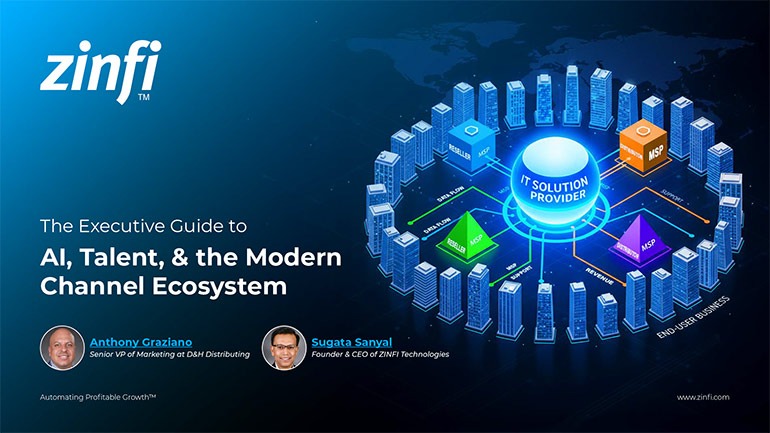 Modernizing Channel Marketing: AI and Ecosystem Enablement Best Practices
Modernizing Channel Marketing: AI and Ecosystem Enablement Best PracticesDownload for FREE
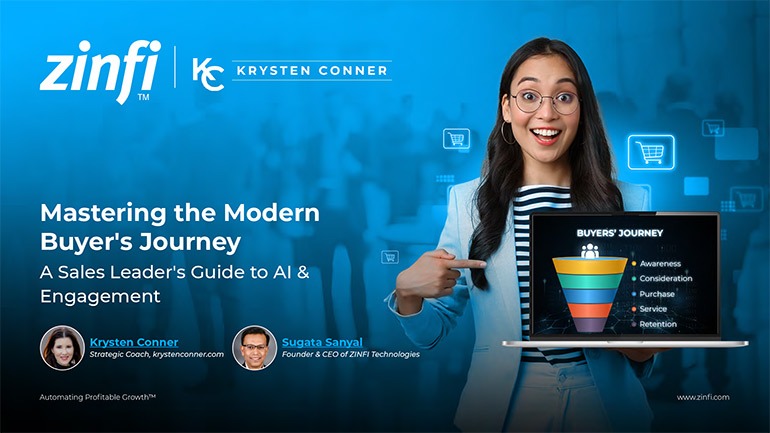 The Channel’s Shift to Partner-Led With AI Best Practices
The Channel’s Shift to Partner-Led With AI Best PracticesDownload for FREE
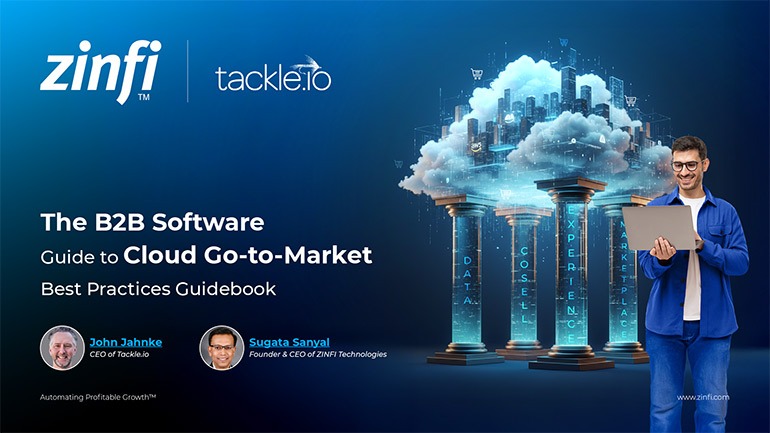 Hyperscalers, ISVs, and AI: Shaping the Future of B2B Software Distribution
Hyperscalers, ISVs, and AI: Shaping the Future of B2B Software DistributionDownload for FREE
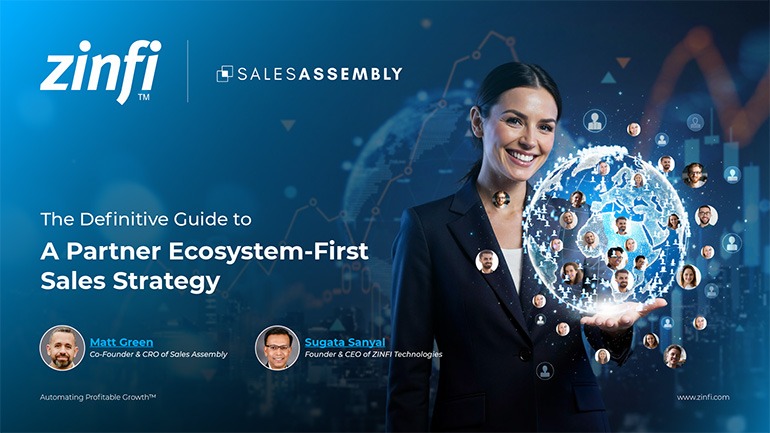 Definitive Guide to a Partner Ecosystem-First Sales Strategy
Definitive Guide to a Partner Ecosystem-First Sales StrategyDownload for FREE
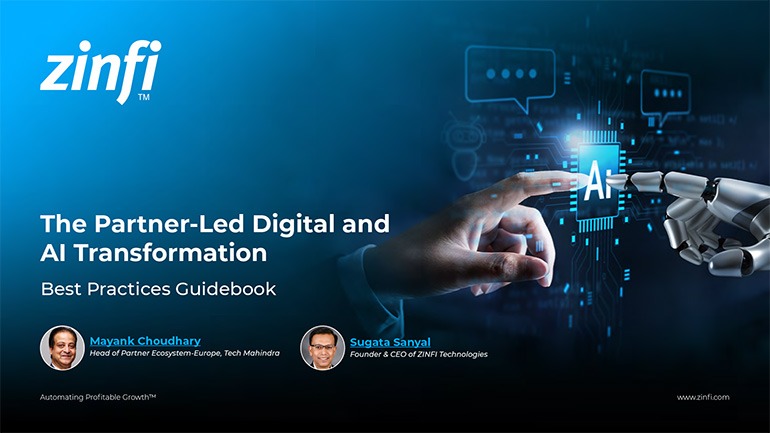 The Partner-Led Digital and AI Transformation Best Practices
The Partner-Led Digital and AI Transformation Best PracticesDownload for FREE
 Startup Talent Recruitment: Hiring Missionaries, Not Mercenaries
Startup Talent Recruitment: Hiring Missionaries, Not MercenariesDownload for FREE
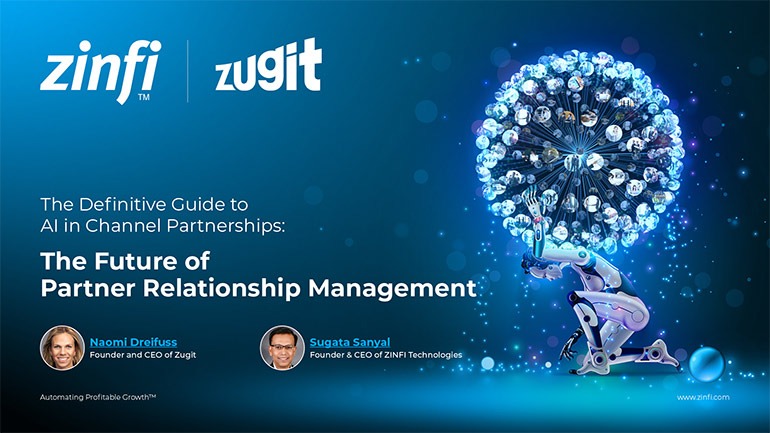 The Future of Partner Relationship Management with AI in Partnerships
The Future of Partner Relationship Management with AI in PartnershipsDownload for FREE
 Cybersecurity for the 99%: Strategies from the Frontline
Cybersecurity for the 99%: Strategies from the FrontlineDownload for FREE
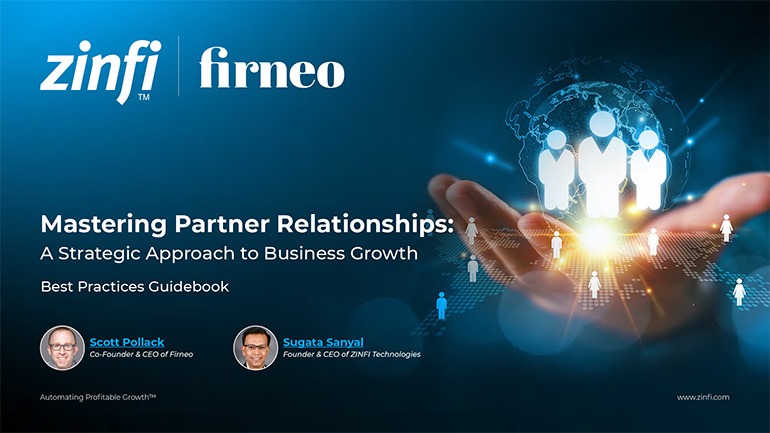 Mastering Partner Relationships: A Strategic Approach to Business Growth
Mastering Partner Relationships: A Strategic Approach to Business GrowthDownload for FREE
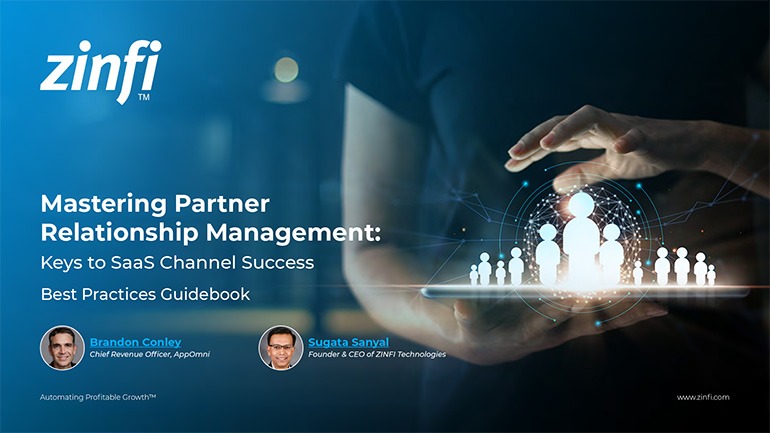 Mastering Partner Relationship Management: Keys to SaaS Channel Success
Mastering Partner Relationship Management: Keys to SaaS Channel SuccessDownload for FREE
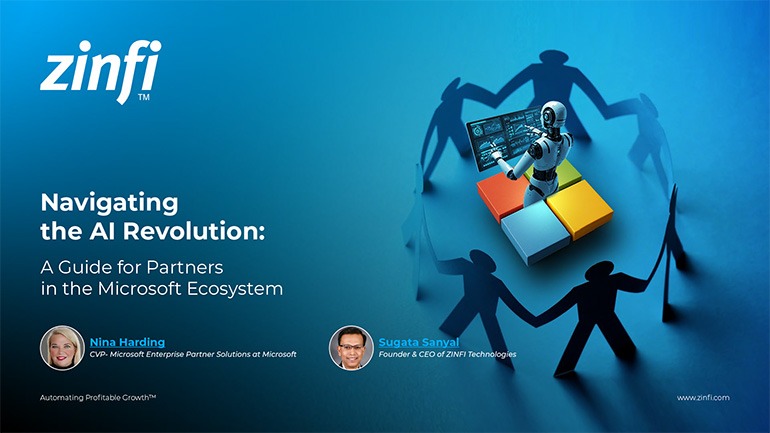 Navigating the AI Revolution: Guide for Partners in the Microsoft Ecosystem
Navigating the AI Revolution: Guide for Partners in the Microsoft EcosystemDownload for FREE
 Mastering the Modern Buyers Journey: Sales Leader’s Guide to AI & Engagement
Mastering the Modern Buyers Journey: Sales Leader’s Guide to AI & EngagementDownload for FREE

